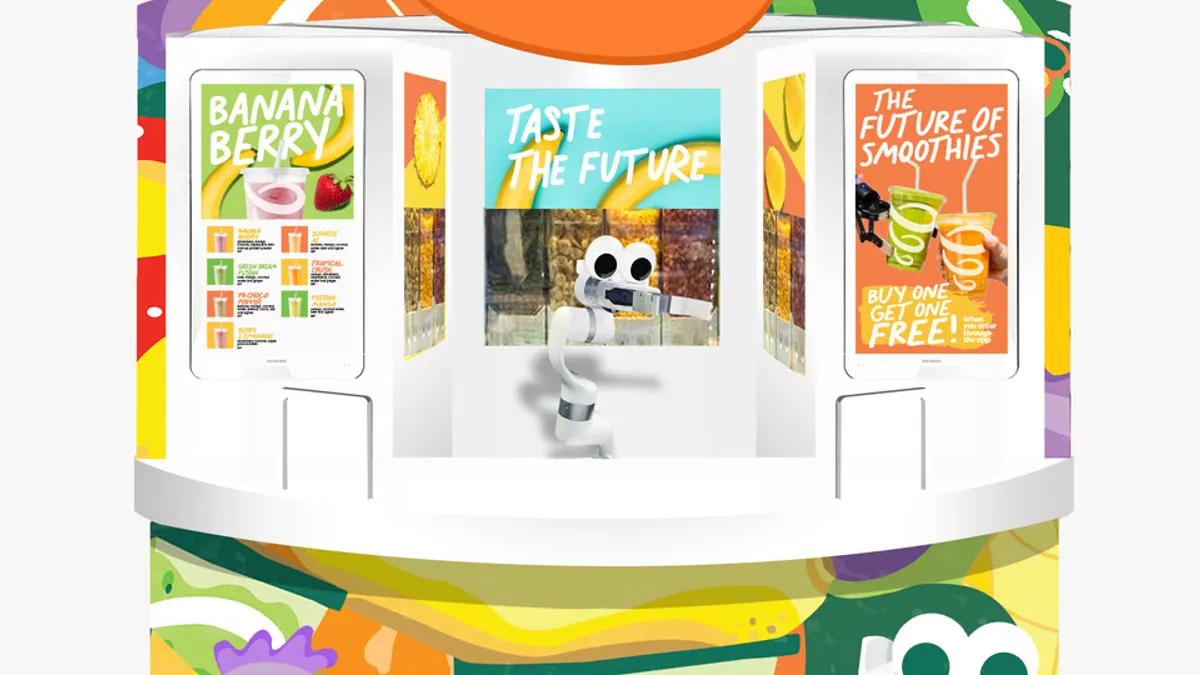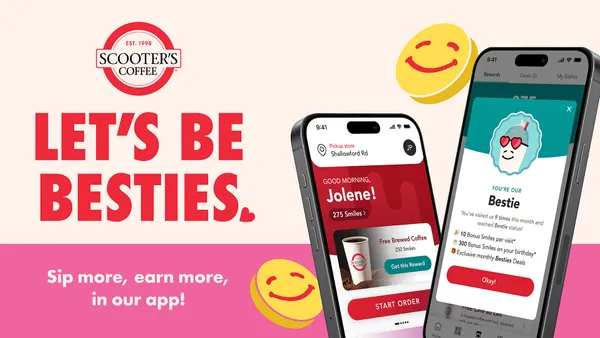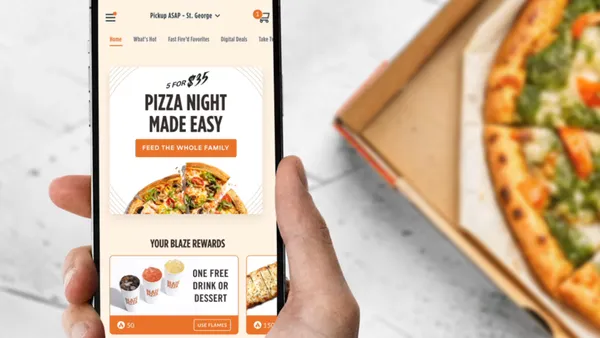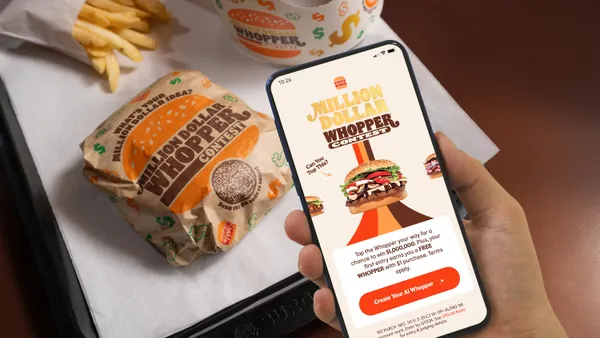Dive Brief:
- Jamba has revamped its autonomous robotic smoothie kiosk to be more interactive with guests, the company wrote in an email on Wednesday.
- The robot now sports googly eyes and can dance and wave, said Danielle Fisher, Jamba’s VP of marketing. Jamba didn’t disclose how much the innovations cost.
- The revamped bots are operating at the Ackerman Student Union on UCLA’s campus in Los Angeles and at a Love’s Travel Center in Williams, California, a Jamba spokesperson said. The design will continue to roll out to additional locations.
Dive Insight:
Jamba partnered with Gestalt Brand Lab to develop the 24-hour robot’s new “personality,” as well as new art decorating the kiosk, according to the company.
“Our newest locations are using a new robotic arm that has even more functionality and movement ranges than its predecessor. So, the team is able to have the robot do even more fun moves and twists and sync the arm movements with additional animation on the jumbo screens to make a dance-off happen,” the Jamba spokesperson said.
Six Jamba by Blendid kiosks are currently operating across universities, colleges, travel stops and malls. If adoption rates are successful at these existing locations, there is likely a solid runway for expansion. The food automation market is expected to grow by almost 10% annually until 2027, Meticulous Research finds.
"Our goal with the Jamba by Blendid creative work was to develop a unique consumer offering only found at the robotic kiosks, drawing consumers in with a fun and Insta-worthy experience," Brian Munce, Gestalt Brand Lab’s managing director, said.
Jamba has seen positive customer response to the new robot branding, the spokesperson said. The restaurant industry has begun to embrace robotics, whether designed for back-of-house or front-of-house tasks, as a labor-saving tool that can boost operational efficiencies. At the National Restaurant Association Show in May, Restaurant Dive saw a myriad of robotic offerings, from sushi-making robots to automated baristas.
Several of these robots had digital displays that with human-like expressions, perhaps in a bid to win over wary consumers. According to a Big Red Rooster report released this spring, nearly 30% of diners would be skeptical if they saw robots preparing their food or delivering it to their table.














